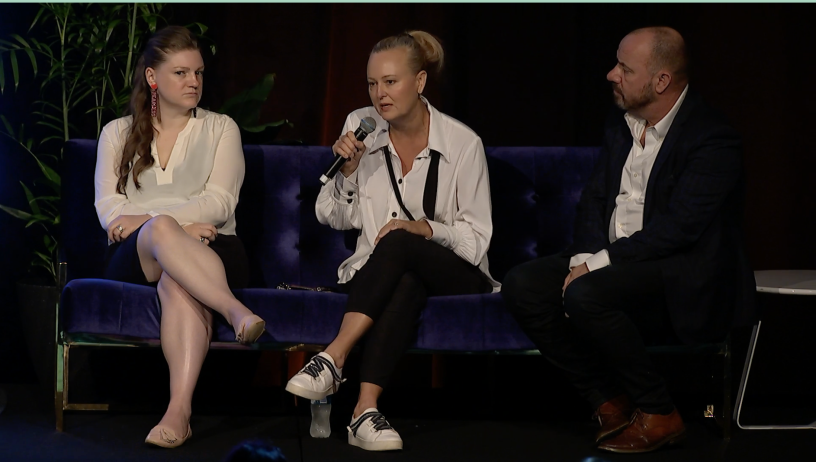The screen industry guilds have submitted their joint recommendations to the Federal Government’s National Cultural Policy, expressing cautious optimism about the road ahead while also stressing the need for quick implementation.
The Australian Writers’ Guild (AWG) and Australian Directors’ Guild (ADG) — each contributors to the Australian Screen Industry Guild (ASIG) document alongside the other bodies and associations — have also released their respective individual outlines for the framework, which has five pillars: First Nations, A Place for Every Story, The Centrality of the Artist, Strong Institutions, and The Centrality of the Artist.
As with Screen Producers Australia, which forms part of the group, ASIG argues for a 20 per cent local content investment obligation from the streamers with protection for certain genres, as a key priority. The group posits this would deliver $336 million in investment, and create an additional 10,000 industry jobs.
ASIG also recommends Australian content quotas for the commercial free-to-air networks are restored. Separately, the ADG calls for the NEDE scheme, which requires investment in Australian drama production by subscription TV operators, be increased from 10 per cent to 20 per cent in line with the streaming obligation.
ADG executive director Alaric McAusland told IF the benefits of the regulation had the potential to flow down through all five pillars but implored the government to act quickly.
“We’re on the back foot already,” he said.
“Certainly every interaction we’ve had with the new minister and our department would suggest they are taking it much more seriously and that they want to implement and expedite a decision around providing a framework in that area, but until it’s inked and in play, it’s still very concerning.
“Not only are we looking for a 20 per cent investment obligation from the streamers, we’re also suggesting there needs to be strong quotas for First Nations, drama, kids, documentary, and other at-risk genres to make sure we are making programs that feed and support those other five pillars.”
A recurring theme for the ADG in its submission is a need for a more diverse and inclusive sector, in particular, for the hurdles faced by “historically excluded” communities to be addressed.
It outlines a need for long-term and dependable funding to be provided to productions that are led by producers, writers, and directors of colour and from marginalised communities, rather than “short-term diversity initiatives”.
McAusland said diversity was something the ADG felt “particularly strongly about”.
“We certainly think there is a need for improved cultural safety across the industry, particularly as we drive much more inclusive practitioners into the sector,” he said.
“Those practitioners and all of our initiatives need to consider intersectionality across all aspects of inclusion.
“What we’ve been calling for some time is that, instead of this ‘deficit model’ where we are allowing people to come through, it’s more around removing hurdles and making sure we’re not inhibiting inclusion but bringing everyone along with this.”
For the AWG, ongoing support of emerging artists, particularly those from underrepresented backgrounds, is crucial to convey.
Under First Nations, the AWG calls for funding agencies to discourage “box-ticking” in favour of professional development and sector growth, while also suggesting that Indigenous Cultural and Intellectual Property be recognised under Australian Copyright Law rather than a matter of contract.
It also advocates for the government to ensure there are market incentives for writers to continue working in Australia, and that those coming up in the industry are provided with ongoing mentorship and support to develop their skills.
Further, it supports a statutory remuneration scheme for writers across screen, stage, and games, so they may be able to secure a stream of income without relying on direct investment.
AWG executive director Claire Pullen told IF the Centrality of the Artist pillar was “critical” to the new national strategy.
“Artists have a special relationship with their work and we need to recognise their right to benefit from their art,” she said.
“We can achieve this by introducing fair minimum standards for commissions by creating an ecosystem that turns on seeing the ‘work’ in ‘work of art’.
“We can foster diverse emerging talent, provide a secure career in the arts, and ensure that our experienced creatives can keep producing outstanding work.”
Like McAusland, Pullen said she was hopeful the new government would be able to bring about lasting change.
“Meeting with the minister and other leaders in the arts and creative sector ahead of the Jobs and Skills Summit, there is clearly the energy and the will to build a thriving industry with good, secure jobs,” she said.
“The National Cultural Plan and the Summit will allow us to make the most of the opportunities ahead of us, and to make sure Australian creatives and stories are at the heart of that industry.”



